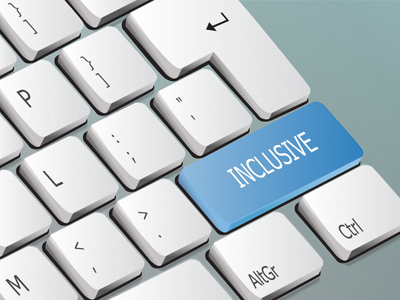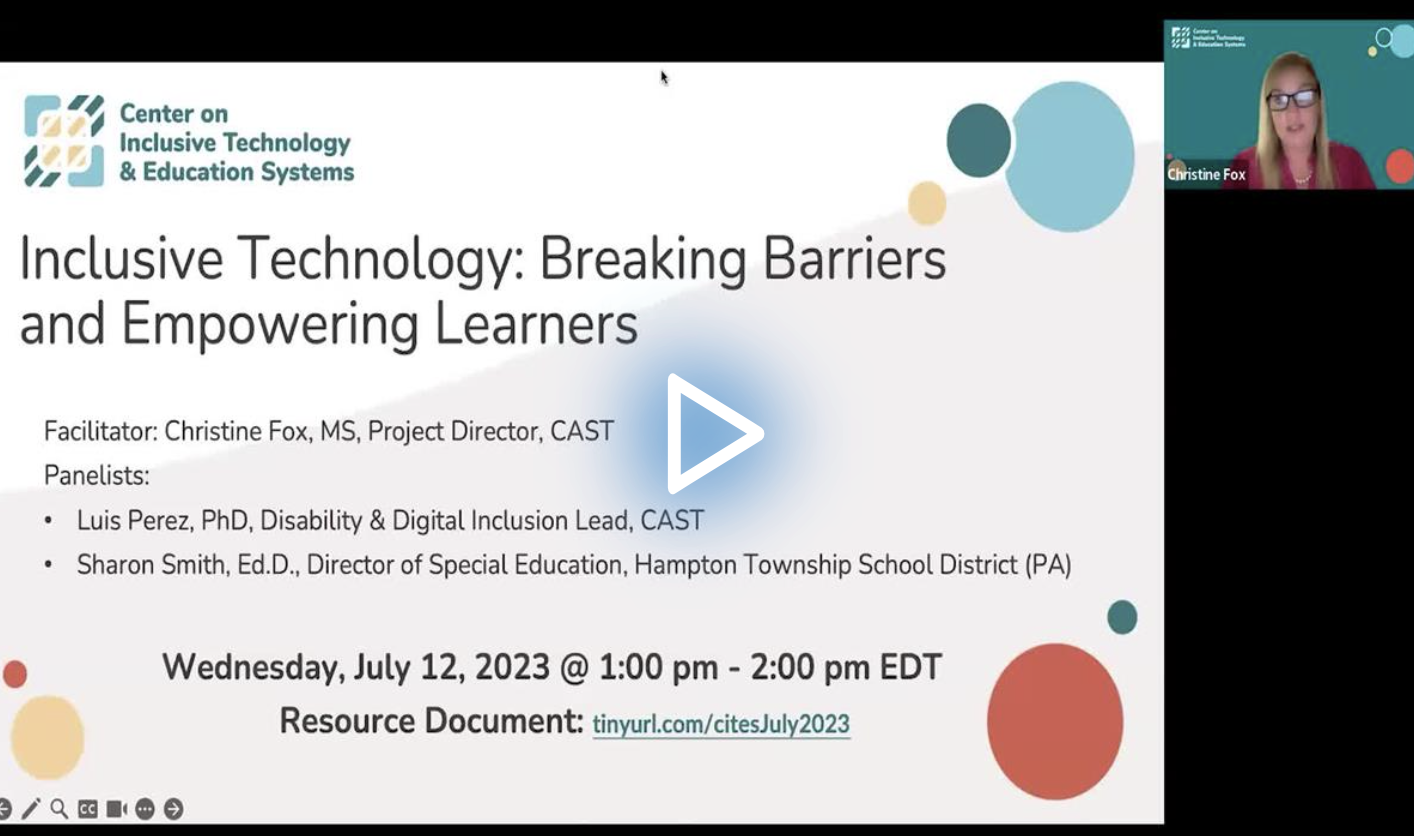Using Inclusive Technology to Break Barriers and Empower Learners
Watch the Recording Listen to the Podcast
During the edLeader Panel “Inclusive Technology: Breaking Barriers and Empowering Learners,” prominent education leaders emphasized the critical role of integrating inclusive technology systems within schools. The discussion centered around the unveiling of the Center on Inclusive Technology & Education Systems (CITES) framework, an initiative supported by the U.S. Department of Education’s Office of Special Education Programs.
This framework is designed to offer district leaders comprehensive resources for fostering and sustaining technology ecosystems that are inclusive of students of all capabilities.
Guiding this conversation was Christine Fox, Project Director of CAST’s CITES project, with panelists Dr. Luis Perez, Disability & Digital Inclusion Lead for CAST, and Dr. Sharon Smith, Director of Special Education at Hampton Township School District (PA).
The panelists delved into several key themes, encompassing an exploration of the CITES framework’s essence, a spotlight on its leadership tools, and insights from districts that have successfully embraced the framework in their educational settings.
CITES advances the conventional definitions of accessible and assistive technologies by providing a practical blueprint for districts to create inclusive environments for all members of their population.
By orchestrating collaboration among Educational Technology (EdTech), Assistive Technology (AT), and Information Technology (IT), CITES offers a roadmap for inclusive systems in which all students can access information equitably—a fundamental civil right deserving special attention as districts adopt this framework.
The CITES framework encompasses six integral components:
- Leadership
- Infrastructure
- Teaching
- Learning
- Assessment
- Family Engagement
To facilitate swift adoption and integration, each facet of the framework is readily available on the CAST Center on Inclusive Technology & Education Systems website.
During the presentation, the panelists shared their personal perspectives and experiences.
Dr. Perez recounted his transformative journey with assistive technology, transitioning from a user to an empowered advocate driven by personal encounters. Recognizing the devoted efforts of individuals dedicated to expanding technology’s reach among students, he embarked on a passionate exploration of this domain.
The Hampton Township School District attributes its achievements to a cohesive implementation team. Operating within an environment where 11% of the student population has special needs, their profound insights underscore the paramount considerations when introducing assistive technology and inclusive practices across educational institutions.
Dr. Smith underscored the universality of inclusive practices, which transcend special education programs, emphasizing their role in fostering inclusivity across diverse backgrounds.
She advocated forming a robust team of leaders to discern when and how additional tools can assist students’ learning. By including external parties in the creation of these policies and evaluation of different tools, her team ensures that they are relevant to their school population.
Because this approach necessitates diverse perspectives, a team-based approach is preferable. For example, including students and parents provides a different perspective and helps to drive holistic inclusivity. Dr. Smith also underscored the significance of extending an invitation to existing users of assistive technology.
It is important to note that this engagement could extend beyond district boundaries, forging connections with diverse stakeholders. Exploring the spectrum of stakeholders invested in inclusive learning, Fox identified curriculum directors, principals, and teachers as pivotal participants in these conversations.
Recognizing the need to normalize the presence of assistive technology, particularly among young students, the panelists acknowledged the importance of early exposure. The Hampton Township School District adopts an innovative approach, operating a coffee shop staffed by students with diverse capabilities, promoting an inclusive atmosphere.
Dr. Perez advocated crafting an accessible procurement process as an initial step toward inclusive practices and technology. Leveraging CITES resources, districts can adopt a Learning Management System (LMS) that caters to all, supported by comprehensive guidelines also available on CAST’s CITES website.
Prioritizing inclusion from the outset communicates a powerful message, followed by pilot testing to tailor solutions to students’ needs. Integrating feedback ultimately maximizes benefits for the specific needs of your school community.
Overall, the panelists emphasized the vital integration of inclusive technology systems into education. The CITES framework offers a practical roadmap for creating equitable technology ecosystems. By empowering district leaders and educators with this framework, they can foster an education landscape that celebrates and nurtures every student’s unique abilities.
Learn more about this edWeb broadcast, Inclusive Technology: Breaking Barriers and Empowering Learners, sponsored by Center on Inclusive Technology & Education Systems.
Watch the Recording Listen to the Podcast
Join the Community
Technology in Schools is a free professional learning community where district administrators, school leaders, and all educators can share ideas, examples, and resources that relate to integrating technology effectively in schools.

Blog post by Laura Smulian, based on this edLeader Panel.





Comments are closed.